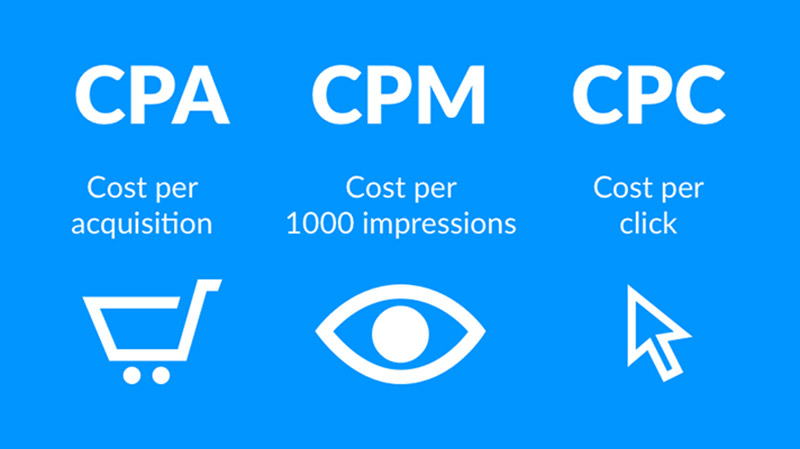cpm cpc cpa in digital marketing

cpm cpc cpa in digital marketing In the realm of digital marketing, understanding the abbreviations CPM, CPC, and CPA is critical for effective budgeting and strategy development. Each of these metrics serves a unique purpose in measuring advertisement performance, helping marketers determine the efficiency of their campaigns.
What are CPM, CPC, and CPA?
CPM, or Cost Per Mille, refers to the cost of acquiring a thousand impressions on a platform. Advertisers who use CPM focus on maximizing visibility rather than direct actions. This metric is particularly useful for branding campaigns where exposure is prioritized, making it essential for marketers aiming to increase their brand’s awareness among the target audience. By analyzing CPM, advertisers can assess how well their ads perform in terms of impressions, enabling them to make informed decisions regarding their ad placements.
On the other hand, CPC, which stands for Cost Per Click, defines the cost an advertiser incurs each time a user clicks on their advertisement. Cpa marketing This model is beneficial for marketers aiming to drive traffic to their websites since it directly correlates advertising spending with user engagement. Understanding CPC is vital for campaigns focused on generating leads or conversions, as it allows marketers to optimize their ads for a higher click-through rate, ultimately increasing their return on investment.
Lastly, CPA, or Cost Per Acquisition, revolves around the cost associated with acquiring a customer through an advertisement. This metric emphasizes conversions, measuring the complete effectiveness of a marketing strategy. Advertisers utilizing CPA can ascertain how much they are spending to convert leads into customers, thus allowing for a nuanced understanding of their campaign’s success and profitability. In essence, comprehending these three metrics—CPM, CPC, and CPA—is paramount for any digital marketing strategy, facilitating informed decisions and optimized budget allocations.

Comparing CPM, CPC, and CPA: When to Use Each
In the digital marketing landscape, choosing the right pricing model is crucial for optimizing ad campaigns and achieving desired outcomes. The three primary models—Cost Per Mille (CPM), Cost Per Click (CPC), and Cost Per Acquisition (CPA)—each serve unique purposes based on campaign goals, target audience, and available budget. Understanding the distinct advantages of each model can significantly enhance advertising effectiveness.
CPM is best suited for campaigns focused on brand awareness. This model is based on impressions, which means advertisers pay for every 1,000 views of an ad. For businesses looking to boost visibility and reach a wide audience, CPM can be an effective choice. It enables marketers to gauge exposure levels and establish brand presence, especially for new products or services aiming for mass market penetration.
Conversely, CPC is ideal for campaigns where direct engagement is a priority. This model allows advertisers to pay only when users click their ads, making it a cost-effective approach for driving traffic to websites. It is particularly beneficial for e-commerce sites or lead generation campaigns where each click has the potential to convert into sales or valuable leads. Here, a deeper understanding of target audience behavior can inform strategies to enhance click-through rates (CTR) and improve overall campaign performance.
Finally, CPA is advantageous when advertisers aim to focus on conversions rather than clicks or impressions. This model allows marketers to pay for actual completed actions, such as purchases or sign-ups, aligning expenditures directly with business outcomes. CPA campaigns can be particularly effective when the target audience has already demonstrated intent to engage with the brand, thereby optimizing advertising dollars towards high-value conversions.
By analyzing these scenarios, marketers can make informed decisions about which model to employ. Understanding audience behavior, market dynamics, and specific campaign objectives leads to ultimate optimization of digital ad strategies, ensuring that each advertising dollar is strategically invested to achieve the best possible results.
Calculating and Analyzing CPM, CPC, and CPA
Understanding how to calculate and analyze key metrics such as Cost Per Mille (CPM), Cost Per Click (CPC), and Cost Per Acquisition (CPA) is essential in evaluating the performance of digital marketing campaigns. Diet for Health Benefits These metrics not only provide insights into the cost-effectiveness of advertising but also assist in optimizing budget allocation for maximum return on investment (ROI).
To calculate CPM, the formula is straightforward: CPM = (Total Cost / Impressions) x 1000. For instance, if a campaign costs $500 and generates 200,000 impressions, the CPM would be ($500 / 200,000) x 1000 = $2.50. This metric is critical for understanding how much is being spent to reach potential customers.
Next, CPC can be calculated using the formula: CPC = Total Cost / Total Clicks. For example, if you spend $400 on an advertisement that receives 2,000 clicks, the CPC would be $400 / 2000 = $0.20. This figure helps marketers analyze how cost-effective their click-based campaigns are.
Finally, CPA is calculated with the formula: CPA = Total Cost / Total Conversions. If you invest $1,000 and acquire 50 new customers, your CPA would be $1,000 / 50 = $20. This metric is vital for understanding how much investment is required to convert leads into actual sales.
Bài viết liên quan : CPA CPM and CPA Marketing
While these calculations are important, marketers must be wary of common pitfalls. Misinterpretation of these figures can lead to misguided strategies. For instance, a low CPC might imply efficiency, but if it does not convert into sales, it could result in wasted expenditure. To effectively leverage these insights, continuous monitoring and adjustment of marketing strategies are advised. Keeping track of these metrics allows for informed decisions, ultimately enhancing the overall effectiveness of digital marketing efforts.
